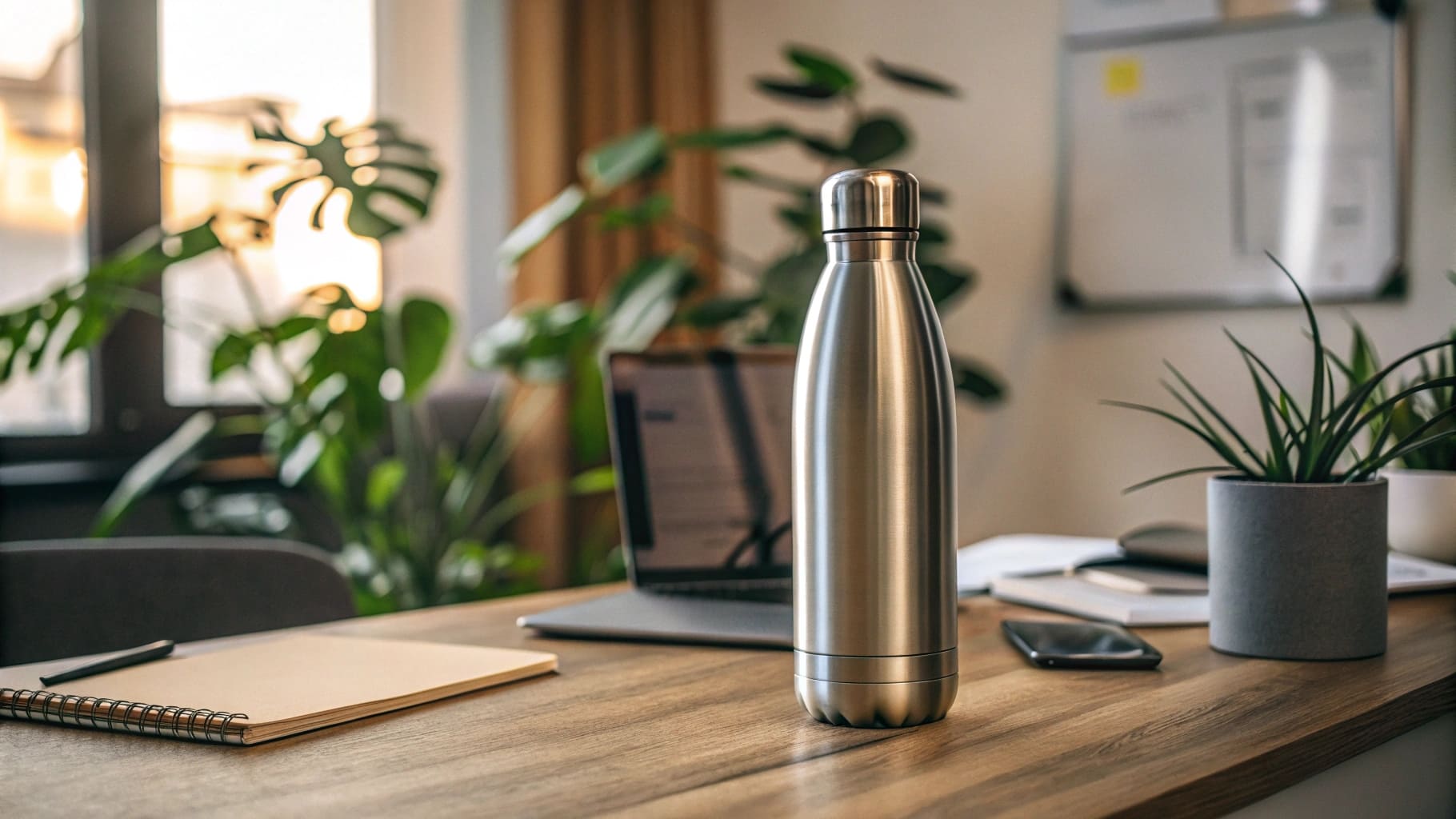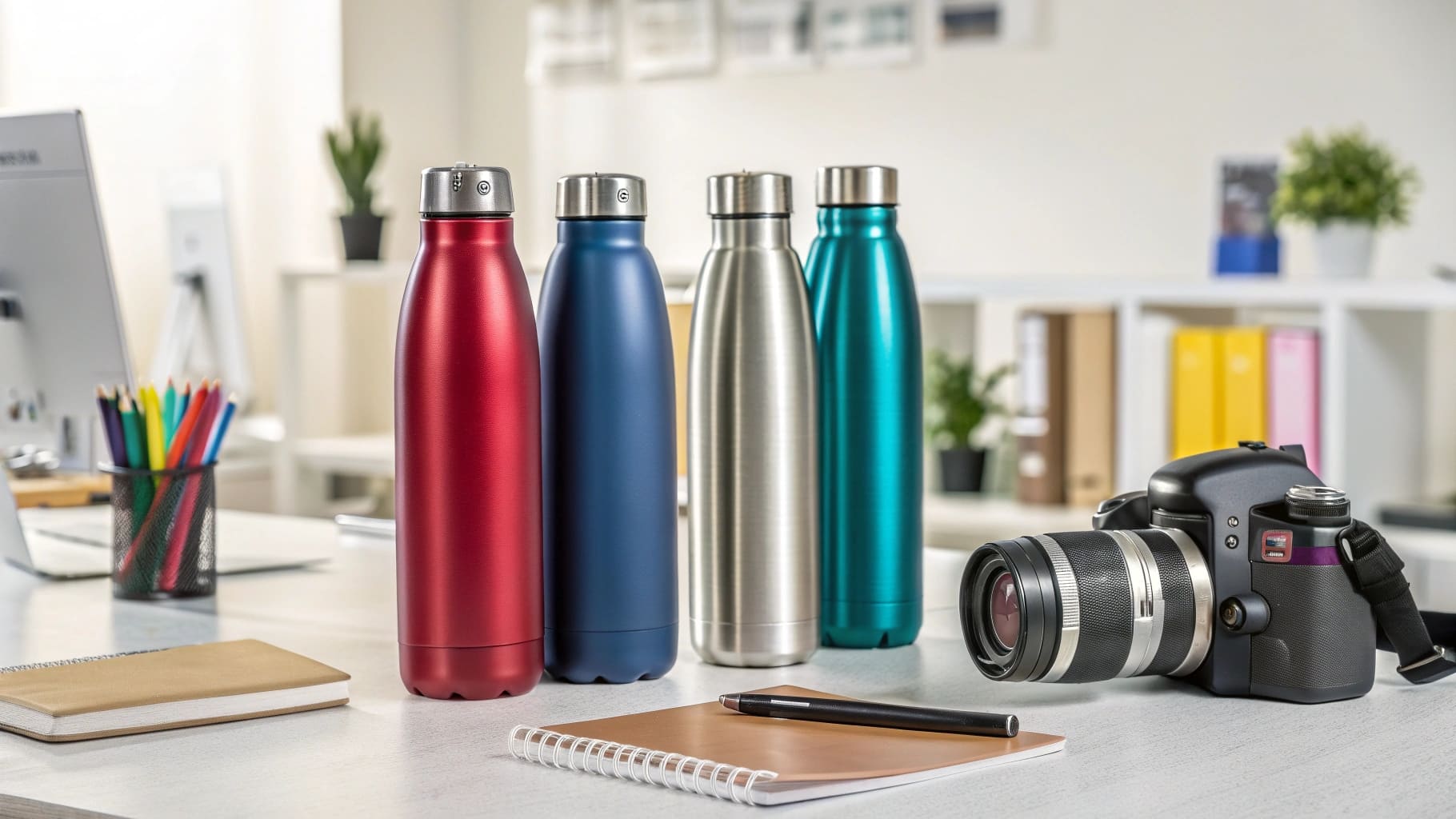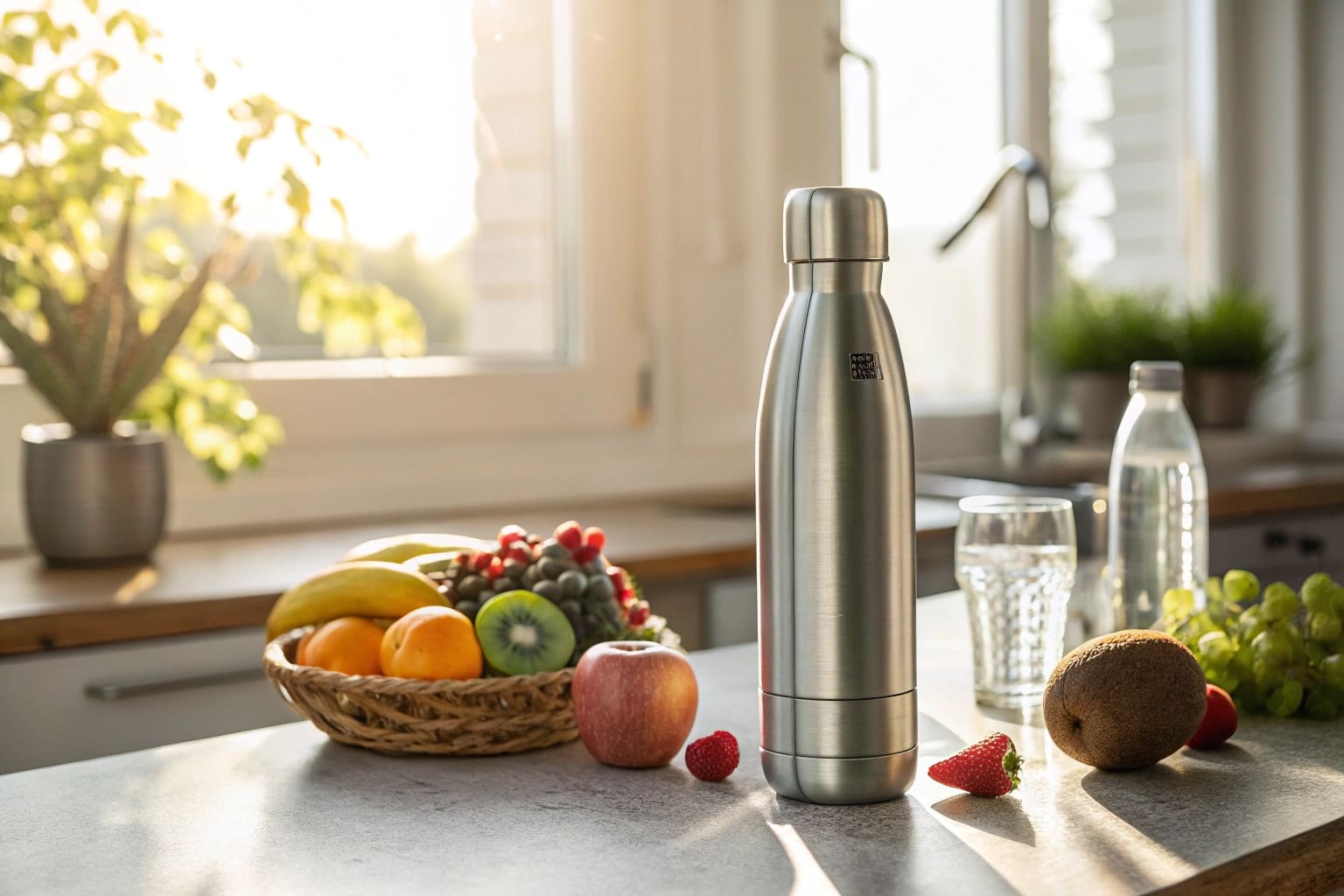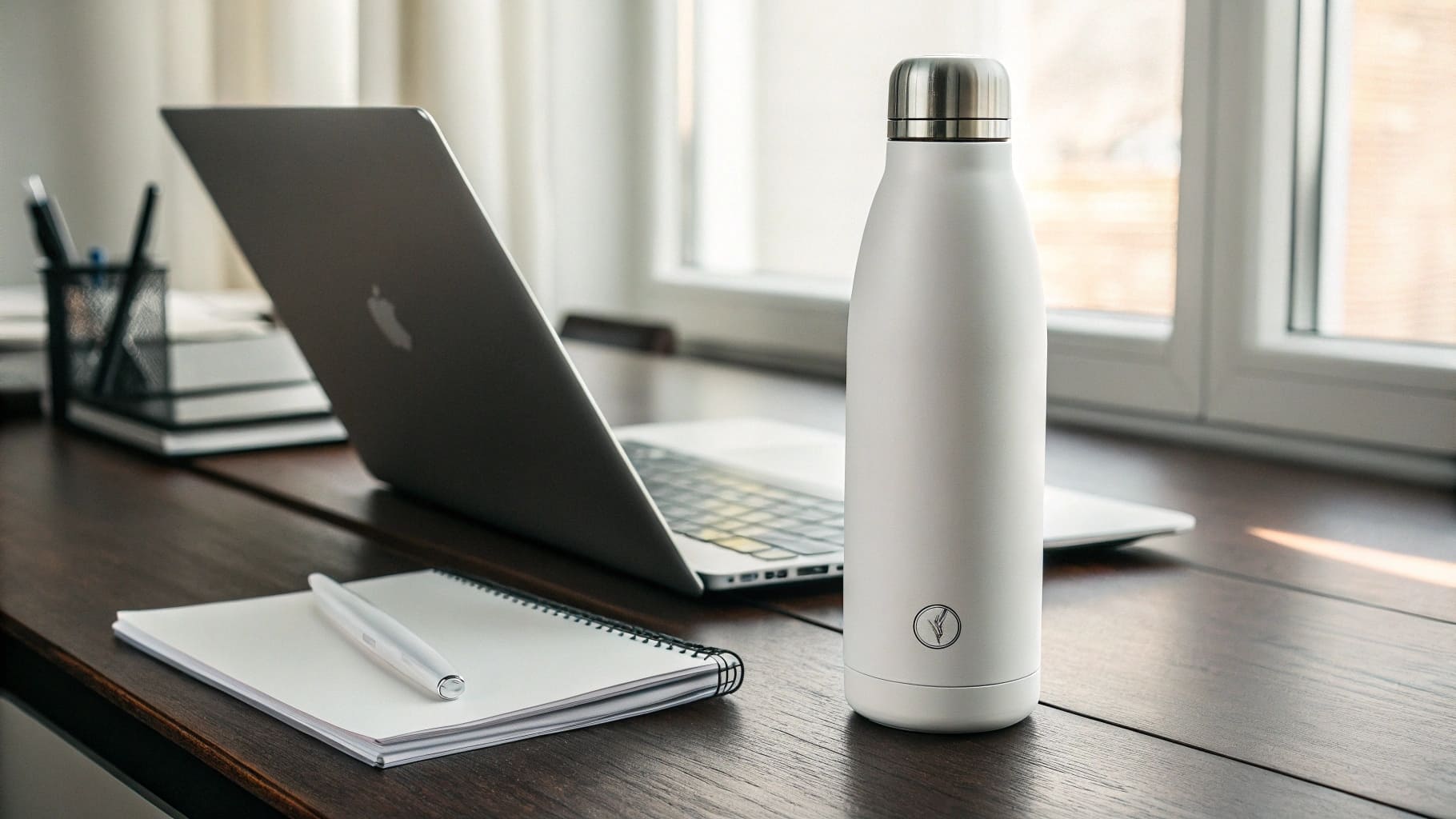Are you struggling to predict future product demands? You might miss big sales opportunities. This post will show you what's next for stainless steel water bottles.
The main trends for stainless steel water bottles in 2025 will be deeper sustainability, like using recycled steel, and advanced customization, offering unique designs and smart features. High-quality materials will remain essential for B2B buyers.

Understanding these trends is key for your business. I've been in the stainless steel bottle industry for years with Icobottle, and I've seen many changes. It's important to stay ahead. This helps procurement officers and startup bosses make smart choices. Let's look at what 2025 holds for us.
What is the New Trending Water Bottle?
Wondering what specific bottle will be the next big hit? Investing in fleeting fads can be costly. The real trend is about core shifts in consumer and business values.
The "new trending water bottle" in 2025 won't be a single item. Instead, it will be bottles that focus strongly on true sustainability, such as those made with recycled materials. Advanced personalization in design and function will also be very important.

Let's dive deeper into these emerging preferences. I remember a client, Mark from Canada, who is always looking for an edge. He understands that "new" doesn't just mean a different shape. It means a better story and better features for his customers.
Deeper Sustainability Takes Center Stage
Sustainability is no longer just a buzzword. It's a core requirement.
- Recycled Stainless Steel: We will see more demand for bottles made from recycled stainless steel. This is a big plus for the environment. It uses less energy to produce than new steel. It also reduces mining. For B2B buyers, this means looking for suppliers who can prove their steel is recycled. I always tell my clients to ask for GRS (Global Recycled Standard) certification.
- Eco-Friendly Production Methods: How bottles are made is also becoming very important. Buyers will ask about energy sources for the factory. They want to know if we save water. They check how we manage waste. As a manufacturer, we at Icobottle are investing in solar panels and better water treatment. This is not just good for the planet. It's good for business.
Here's a simple table showing the impact:
| Feature | Benefit for Buyer | Environmental Impact |
|---|---|---|
| Recycled Steel | Stronger eco-brand story, appeals to conscious consumers | Lower carbon footprint |
| Eco-Production Methods | Enhances brand reputation, meets CSR goals | Reduced resource depletion |
Advanced Customization and Smarter Design
Generic bottles are becoming less attractive. Businesses want products that stand out.
- Unique Colors and Finishes: Forget just picking a Pantone color. Think about gradient colors, textured finishes, or even heat-sensitive coatings. We are exploring new powder coating techniques that offer amazing durability and unique visual effects. This allows brands to create a truly distinct product.
- Functional Lids and User Experience: Lids are getting smarter. We're not just talking about leak-proof. We mean lids with built-in tea infusers, or ones that are much easier to clean. Some might have simple tracking features, like a dial to count refills. The goal is to make the bottle more useful and enjoyable for the end-user. This adds real value beyond just carrying water. For example, Mark once asked for a lid that could be opened with one hand easily, for people who are active. That kind of practical thinking is what drives this trend.
Why Are Stainless Steel Water Bottles Popular?
Do you wonder why stainless steel bottles maintain such strong appeal? Understanding their core benefits helps avoid underestimating market drivers for your business decisions.
Stainless steel water bottles are popular because they are very tough, good for health as they are BPA-free, and much better for our planet than single-use plastic options.

These core advantages have made them a lasting favorite. I've seen this with my own eyes at Icobottle. Customers from America to Europe consistently choose them. Even with new materials appearing, stainless steel holds its ground. Let’s look at these reasons more closely.
Unmatched Durability and Longevity
One of the biggest reasons people love stainless steel bottles is their strength.
- Material Strength and Resilience: Most quality bottles, like the ones we make at Icobottle, use 18/8 or 304 food-grade stainless steel. This material is very resistant to rust and corrosion. It can also handle drops and daily wear and tear much better than glass or plastic. I remember a customer telling me he accidentally drove over his bottle, and while dented, it was still usable! That's the kind of toughness people appreciate.
- Cost-Effectiveness Over Time: While a stainless steel bottle might cost more initially than a plastic one, it lasts much longer. A single bottle can be used for many years. This means you don't have to keep buying new ones. So, in the long run, it saves money. This is a key selling point for B2B clients who want to offer value.
Significant Health and Safety Advantages
People are more health-conscious than ever. Stainless steel bottles meet this concern.
- The BPA-Free Benefit: Many plastics contain Bisphenol A (BPA), a chemical that can seep into water and may cause health problems. Stainless steel is naturally BPA-free. There are no harmful chemicals to worry about. This peace of mind is very important to consumers. Mark, my Canadian client, always emphasizes this to his customers.
- No Flavor Leaching or Odor Retention: Stainless steel is non-porous. This means it doesn't absorb flavors or smells from liquids. Your water will taste like water, not like yesterday's coffee or juice. Plastic bottles, on the other hand, can often retain odors and impart a plastic taste. This purity of taste is a subtle but powerful benefit.
Superior Eco-Friendliness
The move away from single-use plastics is a global trend. Stainless steel is a star player here.
- Reducing Single-Use Plastic Waste: Every year, billions of plastic bottles end up in landfills and oceans. This is a huge environmental problem. Reusable stainless steel bottles offer a simple way to reduce this waste significantly. Each person using a reusable bottle can save hundreds of plastic bottles annually.
- Reusability and High Recyclability: Stainless steel is not just reusable; it's also highly recyclable at the end of its long life. It can be melted down and made into new products without losing its quality. This creates a more circular economy, which is much better for the planet. This complete lifecycle advantage is something we always highlight.
What is the Most Popular Water Bottle in 2025?
Trying to pinpoint the single "most popular" bottle for 2025? Investing in the wrong specific stock based on guesses can be risky for your inventory and profits.
The most popular water bottle in 2025 will likely be one that perfectly mixes top-quality materials like 304 or 316 steel, real, easy-to-see eco-friendly features, and attractive, practical designs that help brands stand out.

It's not about one miracle bottle. It's about a combination of factors that appeal to both the B2B buyer and the end consumer. As someone who exports to America and Europe, I see these demands growing. My client Mark always looks for this blend. He needs quality for his brand's reputation, eco-credentials his customers care about, and a design that sells.
The Foundation: Top-Quality Materials
The base of any popular bottle will always be its material.
- Choosing Between 304 and 316 Stainless Steel: For most water bottles, 304 (18/8) stainless steel is excellent. It’s food-grade, durable, and resists rust well. However, for uses where extra corrosion resistance is needed, perhaps for very acidic drinks or use in marine environments, 316 stainless steel is a superior choice. It contains molybdenum, which enhances its resistance to chlorides and acids. We offer both at Icobottle, advising clients based on their specific market needs.
- Importance of Wall Thickness and Insulation: Double-wall vacuum insulation is almost standard now for temperature retention. The thickness of the steel walls also contributes to durability and the feel of quality. A bottle that keeps drinks hot for 12 hours or cold for 24 hours is a strong selling point. This performance comes from good design and quality construction.
Showcasing Genuine Eco-Friendly Features
Green claims need to be visible and verifiable.
- Clear Labeling and Certifications: Consumers are skeptical of vague "eco-friendly" claims. Bottles made from certified recycled steel, or produced in factories with recognized environmental certifications (like ISO 14001), will have an edge. These certifications should be clearly communicated on packaging or marketing materials. It builds trust.
- Sustainable Packaging Choices: The bottle itself might be eco-friendly, but what about its packaging? We are seeing a strong shift towards minimalist, plastic-free packaging made from recycled cardboard or other sustainable materials. This completes the eco-conscious message. I had a startup boss client who gained market share by being one of the first in his niche to use only compostable packaging.
Designs That Are Attractive and Practical
A bottle must look good and work well.
- Ergonomics, Portability, and User Interface: How a bottle feels in the hand, how easy it is to carry, and how simple the lid is to use are crucial. Is the opening wide enough for ice cubes and easy cleaning? Does it fit in standard cup holders? These practical details often determine daily use. For instance, a new textured grip we developed received great feedback for being secure even with wet hands.
- Brand Alignment and Aesthetic Appeal: For B2B clients, the bottle is an ambassador for their brand. The design, color, and finish must align with their brand identity. Whether it's a sleek, minimalist design for a tech company or a rugged, colorful design for an outdoor brand, the aesthetic needs to resonate with the target audience. We work closely with clients to ensure the final product perfectly reflects their brand values.
Conclusion
In 2025, successful stainless steel water bottles will blend sustainability, smart customization, and top quality. Focusing on these evolving customer demands is essential for B2B success.

